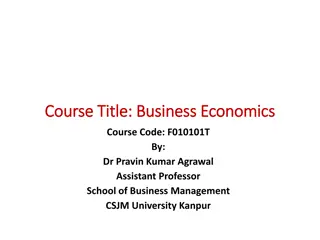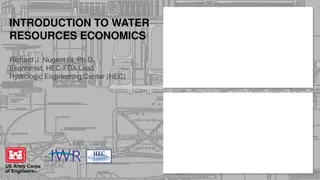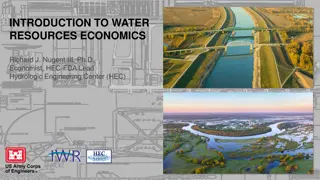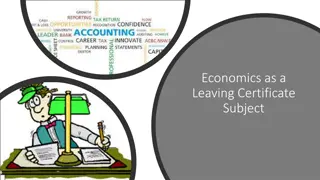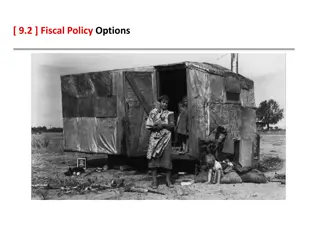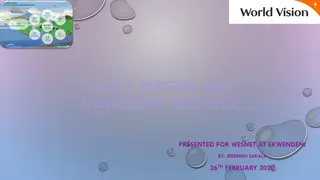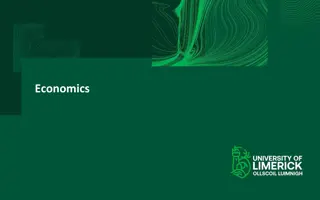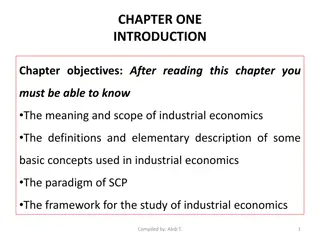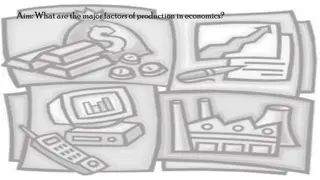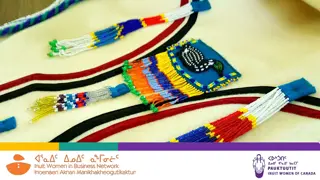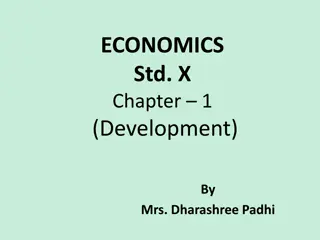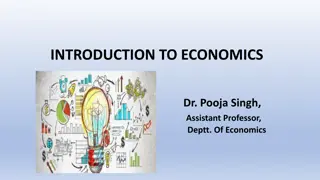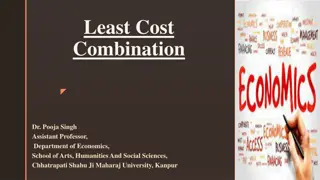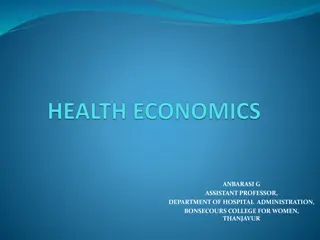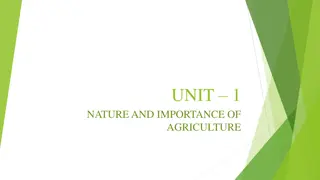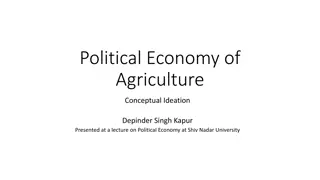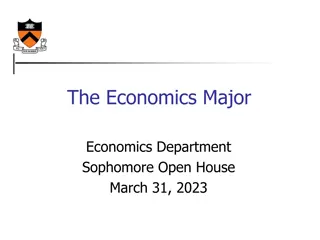Overview of Development Economics and Goals
Development economics is a branch of economics that focuses on improving the economies of developing countries by targeting factors such as health, education, working conditions, and policies. It involves macroeconomic and microeconomic analysis to enhance domestic and international growth. Different development goals vary from landless rural laborers seeking more work and better wages to wealthy individuals aiming for higher family income and educational opportunities for their children. National development involves setting up heavy industries and focusing on areas like education, health, and national income. The World Bank classifies countries based on per capita income, highlighting disparities between rich and low-income nations. However, limitations exist in comparing countries based solely on income. The Human Development Report by UNDP evaluates countries based on educational levels.
Download Presentation

Please find below an Image/Link to download the presentation.
The content on the website is provided AS IS for your information and personal use only. It may not be sold, licensed, or shared on other websites without obtaining consent from the author.If you encounter any issues during the download, it is possible that the publisher has removed the file from their server.
You are allowed to download the files provided on this website for personal or commercial use, subject to the condition that they are used lawfully. All files are the property of their respective owners.
The content on the website is provided AS IS for your information and personal use only. It may not be sold, licensed, or shared on other websites without obtaining consent from the author.
E N D
Presentation Transcript
DEVELOPMENT Chapter-1 Economics By-SK Shandilya
MEANING OF DEVELOPMENT A branch of economics that focuses on improving the economies of developing countries. Development economics considers how to promote economic growth in such countries by improving factors like health, education, working conditions, domestic and international policies and market conditions. It examines both macroeconomic and microeconomic factors relating to the structure of a developing economy and how that economy can create effective domestic and international growth.
DIFFERENT DEVELOPMENT GOALS Category of Persons Development goals /Aspiration A. Landless Rural labourers 1. More days or work 2. Better wages 3. Economic and social equality B. Rich person 1) Higher family income 2) Better education to their children 3) To settle heir children abroad
METHOD OF MEASURING NATIONAL DEVELOPMENT National income it refers to the market values of all good and services which produce in financial year within the country Average income / per capita income it s the ratio of total national income of a country with respect to total population PCI = Total income /Total population
NATIONAL DEVELOPMENT In the process of national development ,a heavy industry is set up Or we can say that it s a all round development of nation Like education, health,and national income
WORLD DEVELOPMENT REPORT World bank has used the criterion of per capita income for classifying into high income and lowincome countries . Acc to the 2006 WDR:- a) $10066 per annum and above in 2004 are called rich countries . b) countries with a PCI of 825 $ or less per annum in 2004 c) In the year 2004, india`s PCI was a mere $620 per annum
LIMITATION OF PCI COMPARISON OF TWO COUNTRIES country Monthly Income of citizen In 2007 ( in Rupees) I II III IV V PCI Country X 8500 9500 8800 9000 9200 9000 Country Y 500 500 500 500 43000 9000
INCOME AND HUMAN DEVELOPMENT HDR published by UNDP compares countries based on educational level of the people their health status and PCI Human development indicators I. Infant mortality rate:- it indicates the number of children that die before the age of one year as a proportion of 1000 lives II. Literacy rate:- it measures the proportion of literate population in the 7 and above age group. III. Net Attendence ratio:- it is the total number of children of age group 6-10 attending school as a percentage of total number of children in the same age group. IV. Sex ratio:-it is the total number of female per thousand of males.
SUSTAINABLE DEVELOPMENT Meaning the word sustainable means something which is not short lived but can continue in future also. Acc to Robert Repetto, sustainable development is a development strategy that manages all natural resources and human resources as well as financial and physical assests for increasing long term wealth and well being .
OBJECTIVE OR FEATURES OF SUSTAINABLE DEVELOPMENT 1.Sustained rise in the real PCI and quality of life 2.Reduction in pollution 3.Rational use of natural resources 4. To fulfils the requirements of future generations


